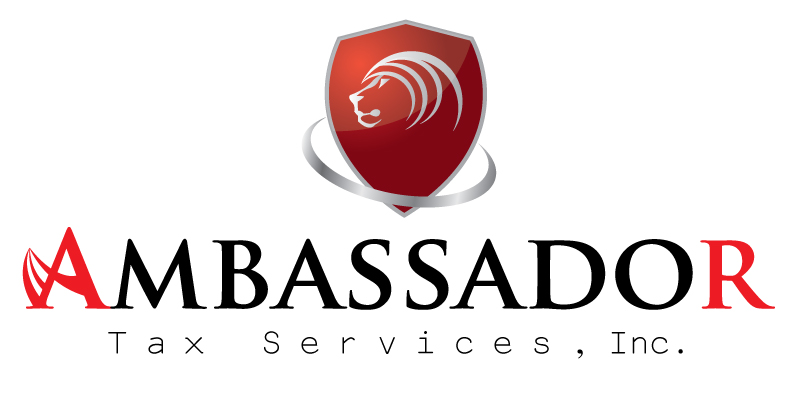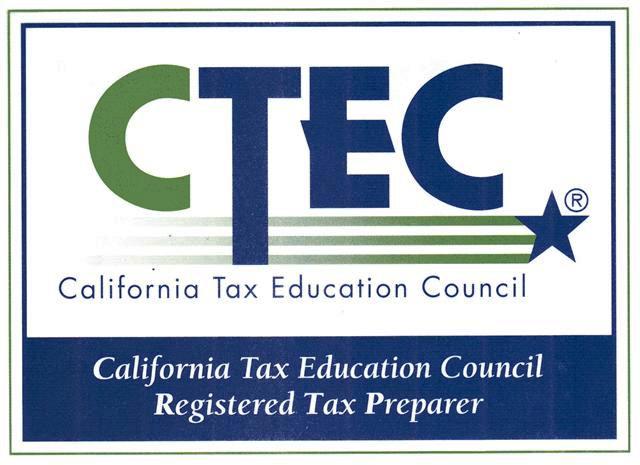
by Ambassador Tax Services, Inc. | May 28, 2022 | Tax Tips and News
Organizations seeking tax-exempt status with the Internal Revenue Service should know that there is more to the process than merely signing on the dotted line. The process for being declared tax-exempt under Section 501(c)(3) of the Internal Revenue Code can vary based on the applicant organization’s specific situation.
First and foremost, it has to be organized and operated for one of the following purposes defined by the IRS:
- Charitable, religious, educational, scientific, or literary purposes
- Testing for public safety
- Fostering national or international amateur sports competition
- Preventing cruelty to children or animals
Application for 501(c)(3) status is made using a Form 1023-series application.

The Process
The circumstances around the organization determine how simple or complex the process will be. The IRS has created a step-by-step application process guide—but the agency also recently highlighted additional information that can help.
Before filling out the application, candidate organizations should apply for a nine-digit Employer Identification Number (EIN)—even if they don’t have any employees. EINs are issued by the IRS to identify companies and tax-exempt organizations when they file and report taxes, and every 501(c)(3) application requires this number.
To apply for an Employer Identification Number, organizations can simply apply online through the IRS website. Once the Form 1023-series application has been filled out, it must be sent to the IRS electronically using Pay.gov online.
Keep in mind, however, that not every organization seeking tax-exempt status has to apply for 501(c)(3) exemption. Churches (including integrated auxiliaries) and public charities with yearly gross receipts of no more than $5,000 are already considered tax-exempt.
Time and Other Considerations
Just when a candidate organization is deemed tax exempt depends on its Form 1023. “If they submit this form within 27 months after the month they legally formed, the effective date of their organization’s exempt status is the legal date of its formation,” the IRS explains. “If an organization doesn’t submit this form within those 27 months, the effective date of its exempt status is the date it files Form 1023.”
Once an organization has been approved as a tax-exempt entity by the IRS, it is considered a private foundation unless the group can meet the standards to be considered as a public charity. Approval for 501(c)(3) status also brings a responsibility to those in the new tax-exempt organization. As such, charitable organizations have to make certain documents available to the public for their inspection.
Among these public documents are the organization’s application for exemption and its annual information tax returns for the past three years. Publication 557, Tax Exempt Status for Your Organization has more information on public inspection requirements.
Additional information, including help for applying organizations, is available from the IRS website:
Source: Things organizations should know about applying for tax-exempt status
– Story provided by TaxingSubjects.com

by Ambassador Tax Services, Inc. | May 26, 2022 | Tax Tips and News
The Internal Revenue Service has once again revised the frequently asked questions (FAQs) for the 2021 Child Tax Credit (CTC) and Advance Child Tax Credit (ACTC). These revisions take into account several changes, including the end of filing season for the 2021 tax year.
The American Rescue Plan expanded the Child Tax Credit to include advance estimated payments during the last half of 2021. While filing season has concluded, some taxpayers can still file a late return to take advantage of the credit.

This new issue of FAQs covers eight topics, including:
- Topic A: General Information: Updated questions 1, 2, 3, 4, 5, 8, 9, 10, 11, 13, 14, 15, 16
- Topic E: Advance Payment Process of the Child Tax Credit: Updated questions 2, 3
- Topic F: Updating Your Child Tax Credit Information During 2021: Removed questions 1, 2 and updated 3,4
- Topic G: Receiving Advance Child Tax Credit Payments: Updated questions 1, 6, 7, 9, 10, 11
- Topic H: Reconciling Your Advance Child Tax Credit Payments on Your 2021 Tax Return: Updated questions 1, 2, 9 and removed 10
- Topic J: Unenrolling from Advance Payments: Updated question 1 and removed 2, 3, 4, 5, 6, 7
- Topic K: Verifying Your Identity to View your Payments 2021 Child Tax Credit: Updated 2, 3, 5, 6 and removed 7
- Topic L: Commonly Asked Shared-Custody Questions: Updated 1 and 2
Complete details for each of the updated topics and questions are available on the IRS website in Fact Sheet 2022-29. The 22-page fact sheet instructs that those with questions should consult the FAQs rather than call IRS assistance lines, as IRS operators do not have any additional information.
The agency also makes it clear that any frequently asked questions are meant to communicate information quickly to the general public, rather than to state official IRS policy or tax law. FAQs, the IRS says, should not be the basis for any arguments or positions before formal legal bodies, such as the Tax Court.
Details of the IRS stance on reliance on FAQs can be found here.
Sources: IRS revises 2021 Child Tax Credit and Advance Child Tax Credit frequently asked questions; Fact Sheet 2022-29
– Story provided by TaxingSubjects.com

by Ambassador Tax Services, Inc. | May 24, 2022 | Tax Tips and News
The Internal Revenue Service is increasing the interest rates it can charge taxpayers for under- or overpayments, starting July 1. This follows the trend of interest rates for consumer loans and other financial transactions.
The Internal Revenue Code dictates that IRS’ interest rates be calculated on a quarterly basis. The rates are split between corporate tax payers and non-corporate tax payers.
What are the new rates?
The IRS says the new rates will be 5% for overpayments (if the taxpayer is a corporation, the rate is 4%); corporate overpayments exceeding $10,000 draw a 2.5% rate; underpayments get a 5% rate; and large-corporate underpayments will add 7%.
In most cases, the underpayment rate for a corporation will be the federal short-term rate plus three percentage points. For corporate overpayments, the rate is the federal short-term rate plus two percentage points.
If the taxpayer is a large corporation, the underpayment rate swells to the federal short-term rate plus five percentage points. If a large corporation makes an overpayment that is more than $10,000 for the taxable period, its overpayment rate will be calculated as the federal short-term rate plus one-half (0.5) of a percentage point.
The new third-quarter rates are calculated using the federal short-term rate that took effect May 1 and are based on daily compounding.
The full schedule of interest rates is listed in Revenue Ruling 2022-11, which officially announces the new rates in Internal Revenue Bulletin 2022-23, dated June 6, 2022.
Source: IRS interest rates increase for the third quarter of 2022
– Story provided by TaxingSubjects.com

by Ambassador Tax Services, Inc. | May 17, 2022 | Tax Tips and News
It’s a tight job market out there, and many employers are struggling to recruit and retain qualified employees to maintain operations. While tax pros can’t provide employees for their clients’ businesses, they can explain tax benefits like the Work Opportunity Tax Credit (WOTC). This credit is designed to reward employers who hire long-term unemployment recipients or those who face employment challenges.

Exploring the Work Opportunity Tax Credit
The Work Opportunity Tax Credit isn’t new. Dating back to 1996, it encourages employers to hire individuals whose circumstances have historically presented barriers to employment by providing a credit for wages paid to qualified workers who start their position on or before Dec. 31, 2025.
The IRS identifies 10 groups who could qualify for the WOTC:
- Temporary Assistance for Needy Families (TANF) recipients
- Unemployed veterans, including disabled veterans
- Formerly incarcerated individuals
- Designated community residents living in Empowerment Zones or Rural Renewal Counties
- Vocational rehabilitation referrals
- Summer youth employees living in Empowerment Zones
- Supplemental Nutrition Assistance Program (SNAP) recipients
- Supplemental Security Income (SSI) recipients
- Long-term family assistance recipients
- Long-term unemployment recipients
To qualify as one of these 10 targeted groups, candidates must meet certain criteria. For example, long-term unemployment recipients are generally defined as those who have been out of work “for at least 27 consecutive weeks and received state or federal unemployment benefits during part or all of that time.”
How do employers determine if a hire qualifies for the WOTC?
To qualify for the WOTC, employers must complete Form 8850, Pre-Screening Notice and Certification Request for the Work Opportunity Credit with the job applicant on or before the day they make an offer of employment. Then, they must submit the form to their state workforce agency (SWA)—not the IRS—within 28 days after the eligible worker started the position.
The WOTC is claimed on Form 3800, General Business Credit, but it’s calculated based on the wages paid to new eligible workers during their first year on the job on Form 5884, Work Opportunity Credit. It’s important to note that this credit can only be claimed once for each new employee—rehires do not qualify.
Can tax-exempt organizations claim the WOTC?
Tax-exempt organizations cannot claim the WOTC for most new hires, with the exception of qualified veterans. Instead of Form 3800, tax exempt organizations instead use Form 5884-C, Work Opportunity Credit for Qualified Tax Exempt Organizations Hiring Qualified Veterans.
For more information, see the LB&I and SB/SE Joint Directive on the WOTC issued by the IRS to help employers who have been impacted by extended delays in the Work Opportunity Tax Credit certification process.
Source: IR-2022-104
– Story provided by TaxingSubjects.com

by Ambassador Tax Services, Inc. | May 12, 2022 | Tax Tips and News
As localized natural disasters continue to wreak havoc on a more global scale, it seems Mother Nature is finding new and frightening ways to disrupt our daily lives. From hurricanes and floods to droughts and forest fires, it’s no wonder we must think about how these “outdoor” occurrences might affect “indoor” living. May observes National Hurricane Preparedness Week in preparation for hurricane season, June 1 through November 30. Surviving these storms isn’t always about just physical survival, but one’s economic survival as well.
American taxpayers need to take steps to ensure they can weather a tropical storm or hurricane by making an emergency plan—or updating an existing one—and that’s where their trusted tax professional can help. Here are five tips from the IRS that you can pass along to clients ahead of hurricane season.
1. Secure Important Documents
Every taxpayer has documents that provide proof of identity and property ownership—from tax return records and birth certificates to property titles and deeds. Whenever possible, these records need to be kept in a waterproof container and stored in a secure space.
Copies of these documents should be kept off-site (such as a bank deposit box), so that the records survive even if the home is damaged or destroyed. Electronic copies can be treated the same way, with scanned documents loaded onto a flash drive or some other stable form of media and duplicates kept off-site just like paper documents.
2. Document What’s Valuable
In the case of hurricane damage to their home, taxpayers should take photos or videos of the contents beforehand; they can be valuable for supporting insurance claims or any post-disaster tax breaks.
Ideally, all property should be recorded, but at the very least, any high-cost items need to be documented such as art, furniture, jewelry and the like. The IRS has helpful disaster-loss workbooks in Publication 584 to help build a list of personal and business property.
3. Check for Fiduciary Bonds
If taxpayers are employers who use a payroll service provider, they should determine if the provider has a fiduciary bond in place. Such a bond can help protect them if the payroll service defaults.
The IRS urges all employers to choose their payroll service providers carefully.
4. Know How to Rebuild Lost Documents
Despite a taxpayer’s best efforts to protect documents from the elements, the loss of some documentation to in a natural disaster is always possible. Reconstructing records may be the only way forward after a hurricane, enabling the taxpayer to get federal assistance or an insurance reimbursement.
The first step in the reconstruction process is a visit to the IRS Reconstructing Records webpage. This page includes a helpful list of procedures with the links to necessary forms and more. Some of the topics covered include business and personal loss, vehicles, tax records and how to figure a loss.
5. The IRS Can Help
Once a disaster declaration is issued by FEMA (Federal Emergency Management Agency), the IRS can postpone some deadlines for filing and paying taxes. This typically occurs for taxpayers within an officially declared federal disaster area. In this case, there’s no need to call the IRS to request the relief. IRS systems will read the address of record for the taxpayer or business and adjust the measures accordingly.
Disaster-impacted taxpayers, businesses and others with disaster tax-related questions can call the IRS at 866.562.5227 to speak with a specialist who is trained to handle disaster-related issues. Those who live outside the disaster area, but also were impacted by the storm, can also call the number to determine if they qualify for disaster relief and to get available options.
The IRS Around the Nation webpage has disaster assistance and emergency relief details for individuals and businesses. And to Build a Kit of emergency supplies, check out FEMA’s Prepare for Disasters webpage.
Other helpful resources include:
- Publication 547, Casualties, Disasters, and Thefts
- Publication 583, Starting a Business and Keeping Records
- FS-2017-11, Reconstructing Records After a Natural Disaster or Casualty Loss
- Small Business Administration
- DisasterAssistance.gov
- Ready.gov
Sources: IR-2022-102; FS-2017-11; “Hurricanes,” Ready.gov
– Story provided by TaxingSubjects.com













